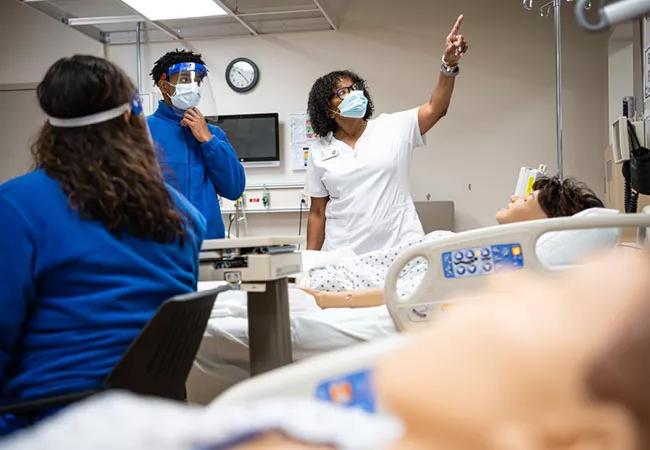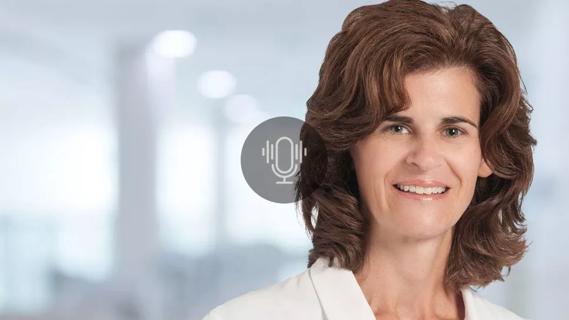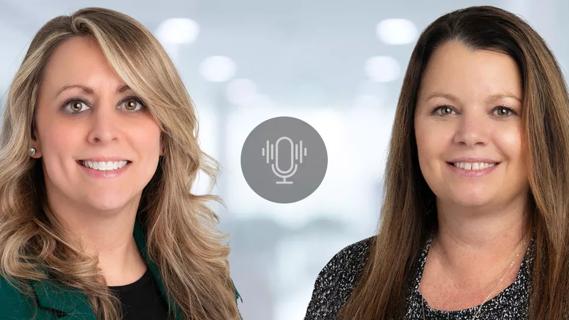Advertisement
ASPIRE scholars work toward BSN degrees

By Joan Kavanagh, PhD, RN, NEA-BC, ANEF, FAAN, Associate Chief Nursing Officer, Nursing Education and Professional Development and Lisa Baszynski, MSN, RN, NE-BC, Senior Director Ambulatory Nursing Education
Advertisement
Cleveland Clinic is a non-profit academic medical center. Advertising on our site helps support our mission. We do not endorse non-Cleveland Clinic products or services. Policy
As nursing schools welcome their newest students this fall, among them will be 18 high school graduates from underrepresented communities in Northeast Ohio who might once have questioned whether college was in the cards.
Fifteen will enter Ursuline College’s Breen School of Nursing and Health Professions, which is ranked second among nursing programs in Ohio by Nurse.org. Three will start their higher education journeys at Cuyahoga Community College.
For two years, these students have participated in the ASPIRE Nurse Scholars program, established by Cleveland Clinic and supported by The Howley Foundation to increase diversity in healthcare, address opportunity gaps and reduce health disparities in the community.
As high school juniors, ASPIRE scholars are taught skills including relationship-based care, research and evidence-based practice and simulation healthcare. Those who choose to return to the program in their senior year participate in a clinical nursing experience and have the opportunity to earn a higher education scholarship.
ASPIRE scholars work as patient care nursing assistants for Cleveland Clinic’s Stanley Shalom Zielony Institute for Nursing Excellence during the summer after high school graduation and throughout college. After college graduation and upon receiving their registered nurse (RN) licensure, they have the opportunity to return to Cleveland Clinic to work as RNs for at least three years.
This program’s first scholars are expected to graduate from college in December 2021.
Among the goals for the ASPIRE program is helping more minority students earn bachelor’s degrees.
In 2010, the Institute of Medicine (now The National Academy of Medicine) outlined a recommendation to increase the number of baccalaureate-prepared nurses to 80% by 2020. In 2015, the Robert Wood Johnson Foundation reported that approximately 45% of nurses were BSN-prepared. The profession remains slightly shy of the goal.
Advertisement
In addition to providing access to Ursuline’s prestigious BSN program, scholars receive room and board to ensure they have an optimal, on-campus learning environment. Ursuline provides other the resources and wrap-around services needed for student success. The college has a 100% employment rate, post licensure.
A recent study by the American Enterprise Institute ranked Ursuline first nationally for its record of moving students from low-income into higher income groups. Ursuline also has one of the highest minority populations in higher education, and its own program offers support and guidance to underrepresented students – all of which aligns with Cleveland Clinic’s social justice philosophy.
As we know from groundbreaking reports published by the Institute of Medicine of the National Academies and the Sullivan Commission on Diversity in the Healthcare Workforce, the current nursing workforce does not reflect the U.S. population. Diversity among caregivers is needed for achieving equity. Colleges and universities often face barriers in advancing health career opportunities for underrepresented populations.
Cleveland Clinic recognizes that one of the challenges in creating a more diverse nursing workforce is the lack of opportunities available to prepare students of diverse backgrounds for higher education. ASPIRE addresses students’ socioeconomic challenges and other barriers to success.
Advertisement
Led by Cleveland Clinic’s Daria Sheafe, MSN, RN and Sol Sanchez, BSN, RN, ASPIRE is based on work by Marianne R. Jeffreys and her Nursing Universal Retention and Success (NURS) model. Jeffreys’ work highlights factors that predict academic performance and success, including student profile characteristics, student affective factors, academic factors, environmental factors, academic outcomes, psychological outcomes, outside surrounding factors and professional integration factors.
The first bridge to success is the ASPIRE admission process, which considers more than a student’s GPA and academics. Students submit an essay that includes extensive details about themselves and their personal lives, ambitions, passions and experiences – all of which can deepen our understanding of the likelihood that the student will succeed in the program.
Success for undergraduate students requires professional integration and socialization in academic settings and within healthcare facilities. In the ASPIRE program, students are exposed to both environments while still in high school. Although the pandemic has necessitated a more virtual setting, curriculum and experiences are traditionally completed within Cleveland Clinic facilities. Scholars also attend a writing workshop taught by an Ursuline professor and visit an Ursuline simulation classroom, complete with virtual reality.
When scholars move on to college, ASPIRE program leaders and Ursuline’s ASPIRE program coordinator continue meeting with them. In this way, the college and the health system partner in each scholar’s success.
Cleveland Clinic and Ursuline leaders also meet every two weeks to discuss academic needs and progress as well as to touch base on students’ mental and social well-being. In these meetings, they share potential challenges students may be facing and outline resources to support them. For example, if a student experiences a family death, they work together to secure counseling through Ursuline’s counseling department.
Through ASPIRE, Cleveland Clinic is increasing opportunities for underrepresented students and further showcasing its commitment to developing a new generation of diverse and expertly trained nurses. Applications for the next ASPIRE scholars are being accepted through Oct. 29. For more information on how to implement a similar program at your health care organization, feel free to email kavanaj@ccf.org or baszynl@ccf.org.
Advertisement
Advertisement

Education, training and reporting can help reduce workplace violence in healthcare

Wound, ostomy and continence nurses provide skin assessments, wound prevention measures, treatment and education

Virtual model enables around-the-clock management of common acute conditions

Resources, education, mentoring help nurses segue to formal leadership roles

Holistic nurses work across all nursing specialties to support patients and caregivers

Nurses play pivotal role in patients’ ability to recover in the comfort of their own homes

Advocating for patient safety is imperative in fast-paced surgical settings

Advice for those pursuing a WOC nursing career